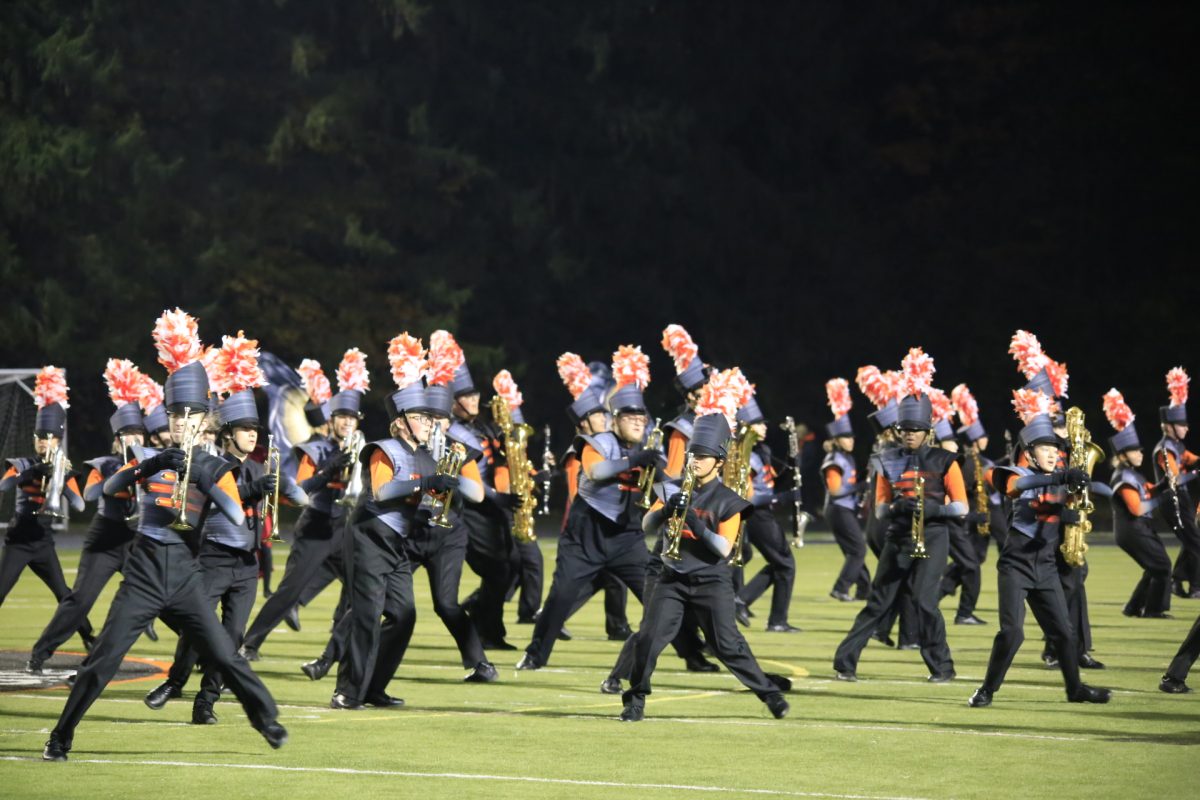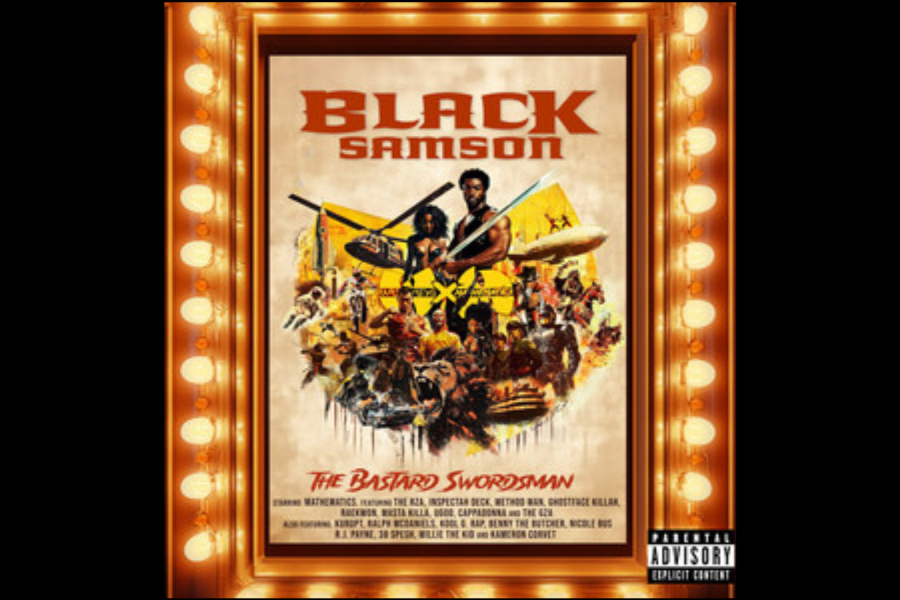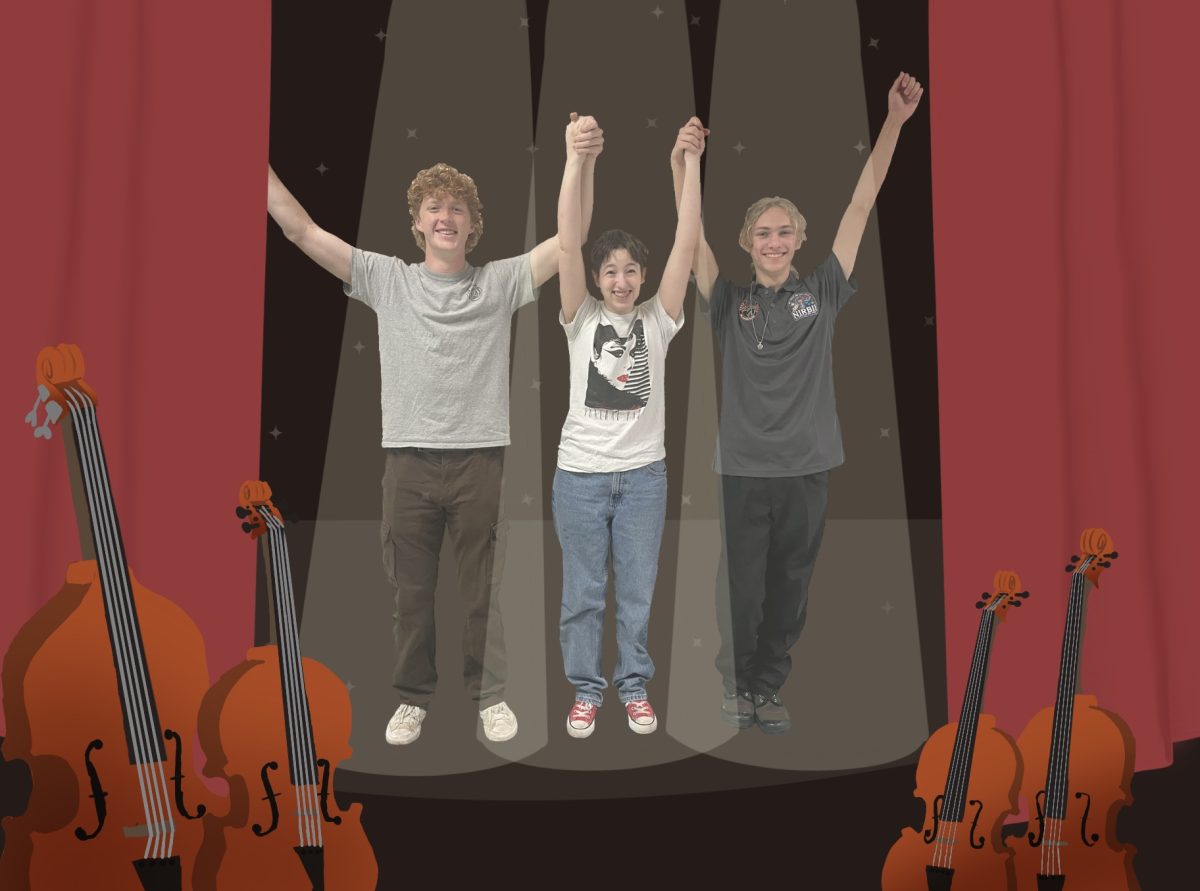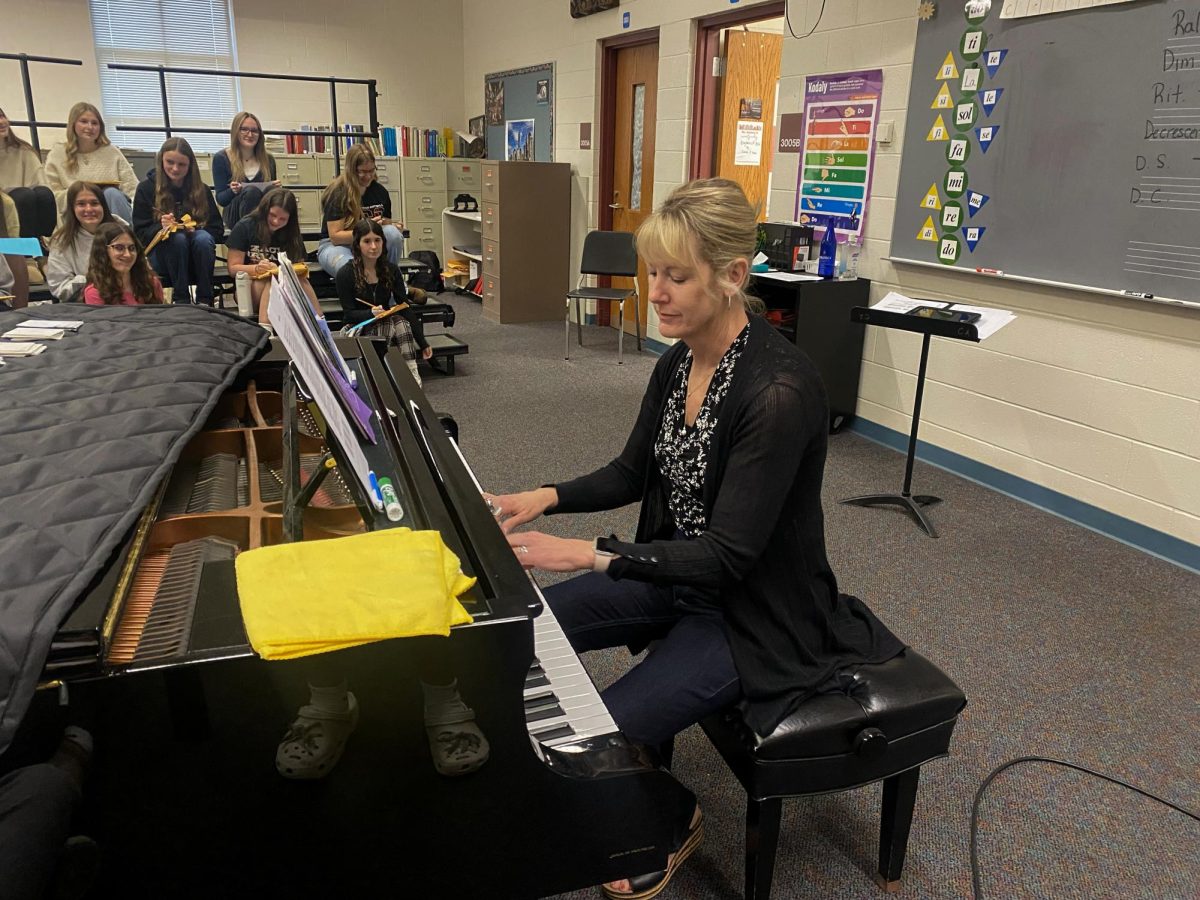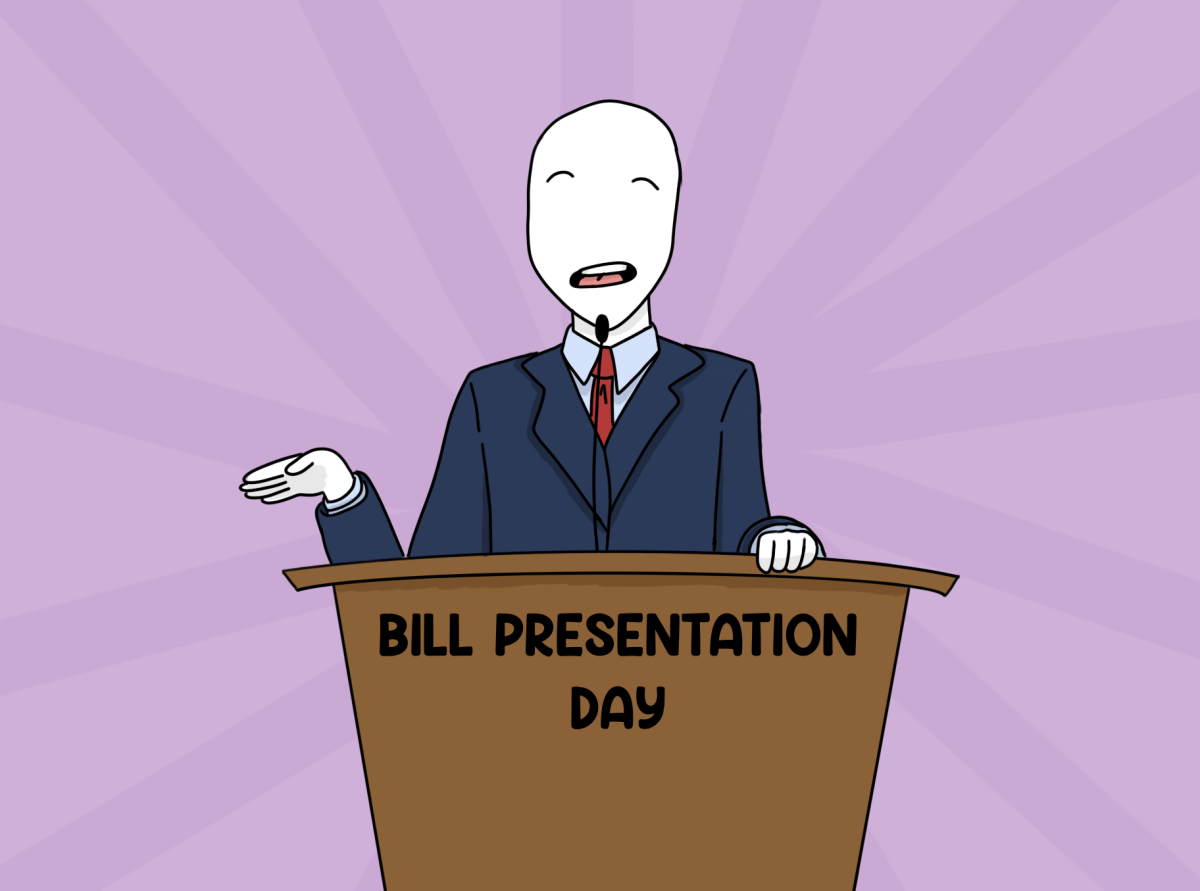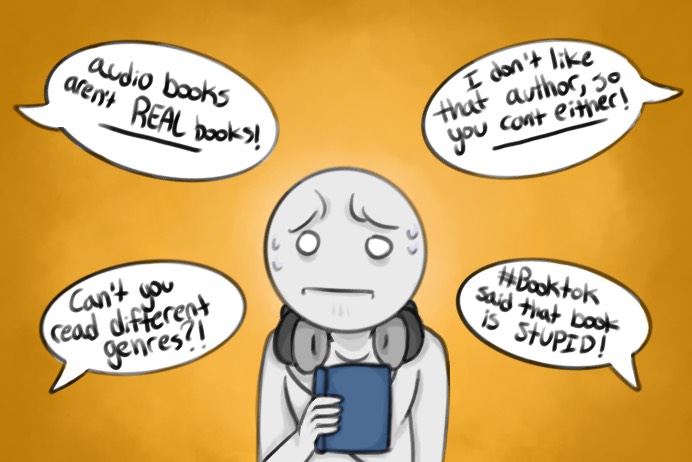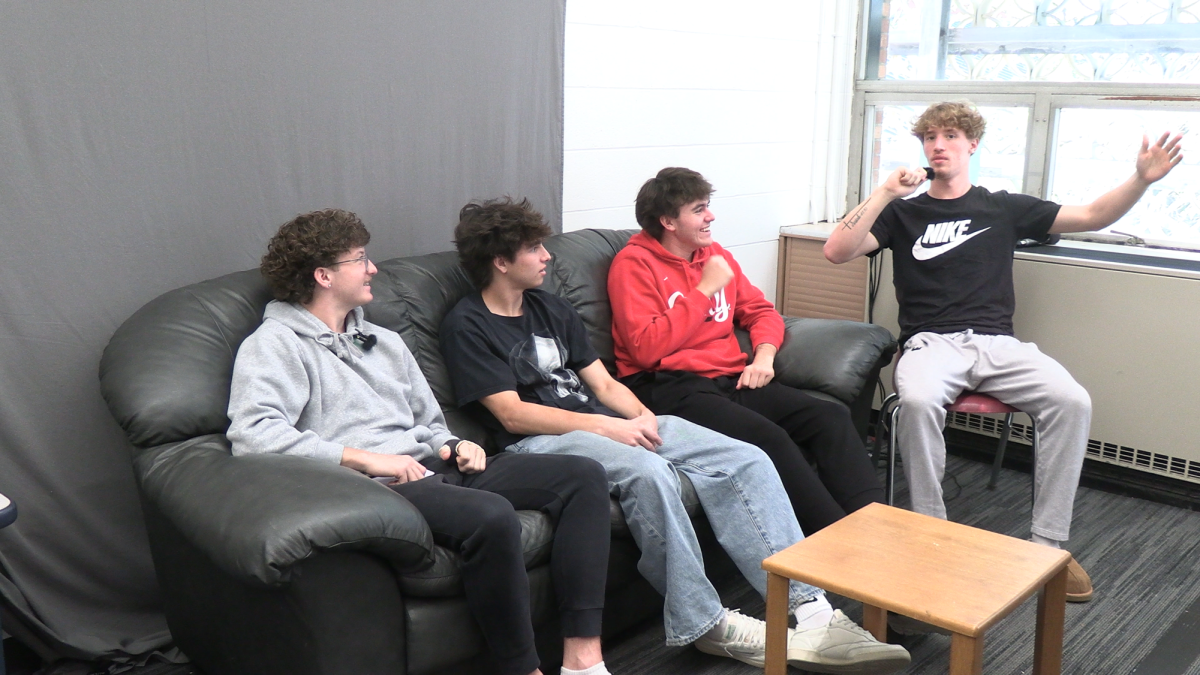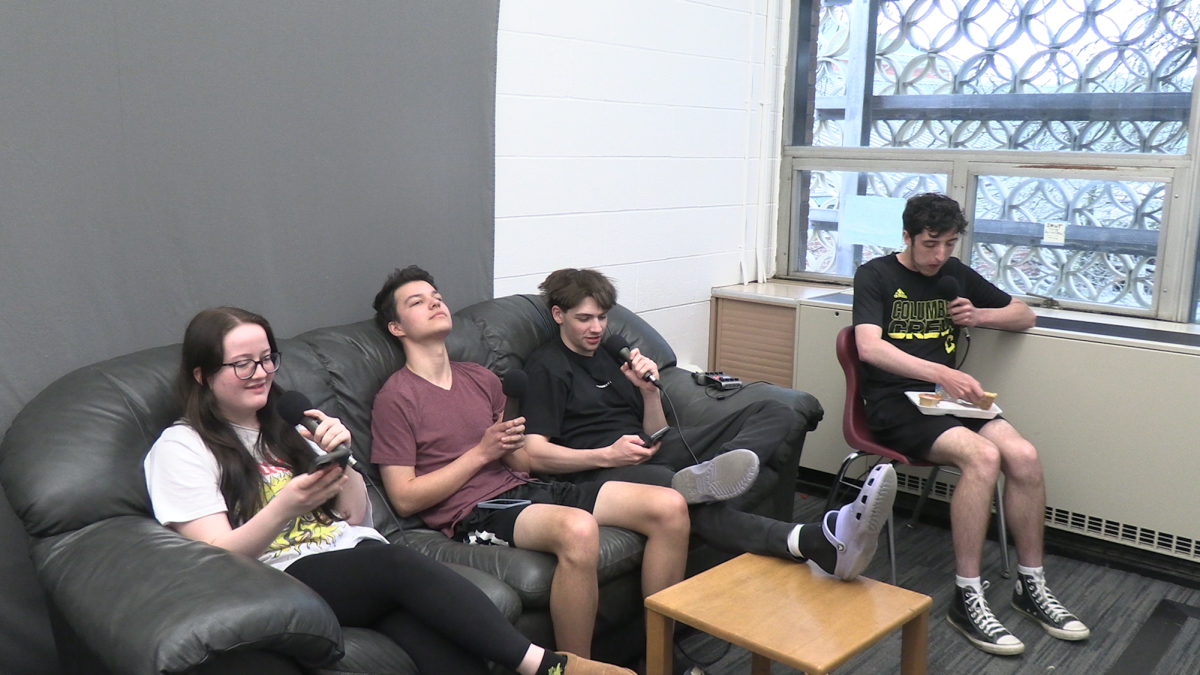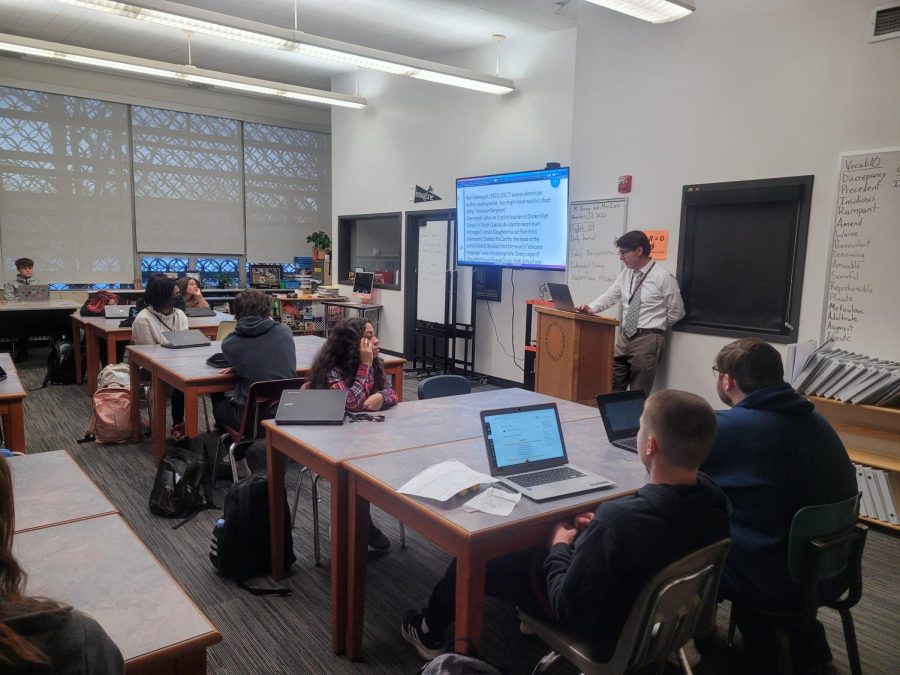Hayes works to institute new grading system
English teacher Tom Hering teaches an English 10 class. Hering is one of the teachers piloting the new mastery grading system.
November 30, 2022
Education is constantly evolving in hopes of improving the system for both students and teachers. For Hayes, this evolution means a new grading system—one that the administration is currently in the process of instituting.
This new system veers away from the traditional grading system involving the percentages and letters that students know well, and instead focuses on proficiency scales or mastery scales. In this system, students receive a score on a number of scales measured one through four, with a four being the highest.
The assignments that students complete are designed to focus on moving them up the set scales for the class.
“The idea is we’ve picked a number of topics, and what happens is you’ll get one score on each of those,” assistant principal Rex Reeder said.
Students are able to assess on each topic as many times as they need to make their way up the scale.
“What you’re going to hear a lot of students say is ‘I’m getting assessed in levels,’” Reeder said. “Instead of me giving a zero-to-100 point test, where you might not even know the terms and you’re going to fail that test and never have a chance to really go back, you can do corrections.”
Reeder said the idea behind this system is to create a more standard concept of grading that eliminates ambiguity between students and teachers, and to make it easier for students to understand and remember what it is that they are learning and why they are learning it.
“The state has a number of standards we have to cover,” Reeder said. “We’ve tried to go through and prioritize what’s most important, because if I teach you 40 things in a year, you won’t remember 40 things.”
The system is also designed to score students on what it is that they know, rather than the work they may or may not have done to get to that point.
“There’s no homework in this,” Reeder said. “You have to do work to get better, you have to practice, but the idea is I’m not scoring you on a behavior.”
Right now, the system is being utilized in mainly freshman and sophomore classes.
English teacher Tom Hering is piloting the system in his Humanities, English 10 and video production classes.
“As students move through the year, they probably have at least two or three official trials for each of the scales,” Hering said. “We have 26 scales in my [Humanities] class, and then anytime that they want to try to prove their mastery on a scale to move up, they can also sort of do it independently as well.”
An example would be the scale focusing on tone. To earn a four, students must be able to effectively analyze how tone affects the reader or the text, but to earn a one, all they need to be able to do is simply define tone and other common tone words.
A one score is similar to a D-, which is a passing grade. “[A one is] basic terms, and then you start moving up the trail,” Reeder said. “So you know what you need to do, we work to help you get there … Once you get to the three, I’m not assessing you on one, two and three. I’m only focusing here with higher questions.”
These scales also function as an all-year grade. This way, rather than receiving a final grade at the end of each quarter, students have the entire year to prove what they have learned.
“I think it is sad that we have waited this long to start doing it,” Hering said. “It really is an opportunity for students to understand why they’re doing what they’re doing, and for us to really know that they’re learning something.”
Unfortunately, the system is not necessarily reaching all students the way it has been designed to.
“I think it’s not very good for students because it’s supposed to be designed so they know where they’re at, but it doesn’t actually work that way because nobody knows what it means,” said sophomore Greta Walraven, a humanities English 10 student.
However, the system has shown improvements with students statistically.
“Our failures have dropped way down,” Reeder said.
The goal for next year will be to have the system instituted in all core freshman courses. The year after that will be sophomore, then junior and then senior courses and electives, so that eventually everyone will be on the same model.
“I think [students] are going to be frustrated for a couple of years. It’s frustrating for all of us at first,” Hering said. “But I think long term, students are going to be more motivated learners because they’re going to understand why they’re learning and what they’re learning.”



